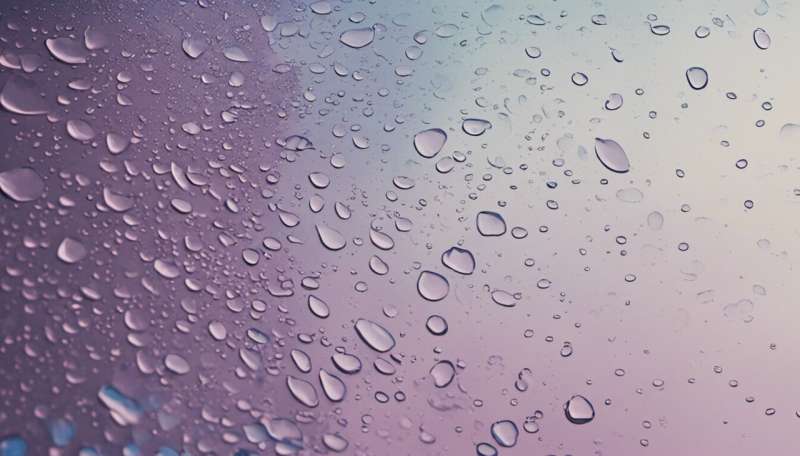Credit: AI-generated image (disclaimer)
Recent torrential rain along the east coast of Australia has sparked renewed fears of mold in people's homes, which can cause dangerous health problems. Many flood-affected residents in northern New South Wales and Queensland will also be contending with mold as part of the post-flood cleanup.
Molds are fungi—microbes like viruses or bacteria. There are some microbes in every building and they're usually harmless.
In a damp or water-damaged environment, however, toxic mold species grow and release spores that can cause health problems if inhaled.
Here's what you need to know.
More than just lungs: Mold can affect health in other ways
Many of us know someone whose asthma is triggered by exposure to mold. But even non-asthma sufferers are at risk.
Research shows dampness, mold and related airborne particles are associated with a range of adverse health outcomes, including increased risks of asthma, allergies, and respiratory infections and symptoms.
A parliamentary Inquiry into Biotoxin-related Illnesses in Australia noted the need for further research into mold prevalence, mold measurement and the potential health effects of exposure to damp and mold.
Some research suggests people exposed to mold in their homes report more severe depression and anxiety symptoms. Of course, this association isn't just about mold, and worsening mental health is likely to do with a range of factors associated with living with damp and mold, including poor housing condition, poverty, and general ill health.
Mold hot spots in Australia
The World Health Organisation advises no level of exposure to mold can be considered safe for health. It says dampness and mold-related problems should be prevented and remediated early to avoid potentially harmful exposure.
Despite this strong advice, mold is a common problem in Australia. Until recently, not much has been known about mold prevalence, with the official WHO guidelines on indoor air quality estimating 10 to 50% of Australian homes are affected by dampness and mold.
We can also make an estimate using the large-scale Australian Rental Housing Conditions Dataset, which collates robust data collected from over 14,000 rental households in 2020.
Our analysis of this data set shows 27% of renters say their current home has problems with mold and 21% report problems with dampness.
Mold is often found in the south eastern states of Australia due to a combination of lower temperatures and damp weather. It is also a problem in New South Wales and Queensland, where 39% and 26% of regions respectively have a high prevalence of mold in rental homes. Sydney has more mold than Melbourne.
We have mapped the data for Melbourne, Sydney and Brisbane here:
You're also more likely to find mold in poorly maintained, low-income housing. These poor housing conditions are more common among people who already experience health issues.
Children are another group at higher risk of living in housing with mold—33% of people living with two or more children reported mold in the Australian Rental Housing Conditions Dataset (compared to 27% of childfree households).
Other risk factors for mold included roof and plumbing defects, and the need for urgent repairs.
Building codes and rental policy can help
Mandated building standards are important to ensure design, building and maintenance sufficiently address mold growth.
Our current building codes do not focus on preventing damp conditions. In fact Australia's National Construction Code previously inadvertently promoted moist indoor environments by solely focusing on well-sealed, energy-efficient buildings.
The National Construction Code is to be updated in late 2022. Hopefully, the new code will directly address the mold-promoting condensation problem caused by measures to increase energy efficiency in buildings.
New builds, of course, don't house the whole population. Almost a third of Australian households rent, and this includes older homes with a range of structural issues. Policies targeting renters and landlords could have a significant impact on population health.
While tenancy regulations vary across Australia, some states and territories have begun to address the issue of mold in rental housing.
For example, the recent Victorian rental reform mandates premises: "must be free from mold and damp caused by or related to the building structure."
It allows tenants to log an urgent repair request where issues, such as leaking roofs or plumbing, lead to mold.
Since there are no accepted standards for mold measurement or remediation, legislation referring to "mold and damp" may not end up improving housing conditions.
An agreed definition of what level of mold is harmful, and how it can be measured, would allow governments to set cut-offs above which homeowners are compelled to intervene.
What can you do about mold in your home?
Prevention is more efficient than removal. The key is keeping the house dry and free of dust. Make sure you:
- fix leaks, including roofs and walls as well as plumbed appliances such as dishwashers
- increase ventilation and air circulation with windows and fans
- use extractor fans when cooking, bathing or drying laundry
- use a dehumidifier
- clean condensation from inner windows.
If mold has already set in, the best option is to remove it physically with a microfibre cloth.
Mold remediation is complex and often best undertaken with professional advice. Australian state and territory governments provide advice on dealing with dampness and mold in the home.
For example, see advice sheets from the Victorian Department of Health, NSW Health and the Queensland government.
This explainer by the Healthy Housing Centre of Research Excellence on mold and damp also provides information on where you can seek help.
Provided by The Conversation
This article is republished from The Conversation under a Creative Commons license. Read the original article.![]()























